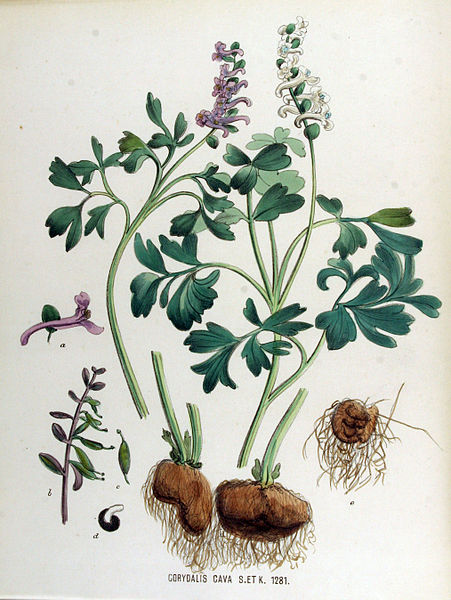Dies ist eine alte Version des Dokuments!
Papaveraceae - hollowroot, Hohler Lerchensporn
Perennial herb, 15-30cm high, growing in the semi-shade woods of Europe on moist soil. The slightly fragrant violet and white flowers are pollinated by Bees. „cava“ comes from the Latin word cavus for hollow and refers to the hollow tuber. All plant parts are weak, but the tuber is highly toxic. http://de.wikipedia.org/wiki/Corydalis_cava
Bulbocapnine is the main alkaloid of C. cava. „It has been shown to act as an acetylcholinesterase inhibitor, and inhibits biosynthesis of dopamine via inhibition of the enzyme tyrosine hydroxylase… it inhibits the reflex and motor activities of striated muscle. It has been used in the treatment of muscular tremors and vestibular nystagmus.“ http://en.wikipedia.org/wiki/Bulbocapnine
„Its flowers emit a fine floral-balsamic odor with a slight undertone of amine compounds. In the vacuum headspace concentrate obtained therefrom we identified methyl cinnamate as the main constituent (46%) and in lower concentrations methyl dihydrocinnamate (4%) and methyl phenylacetate (2%)… Further main volatile constituents of Corydalis cava flowers include 2-phenylethanol, linalool and 2-(4-methoxyphenyl)-ethanol.“ [Surburg et al., Volatile compounds from Flowers, in: Teranishi, R.;Buttery, R. G.;Sugisawa, H. Bioactive volatile compounds from plants. (Book) 1993, 180]

